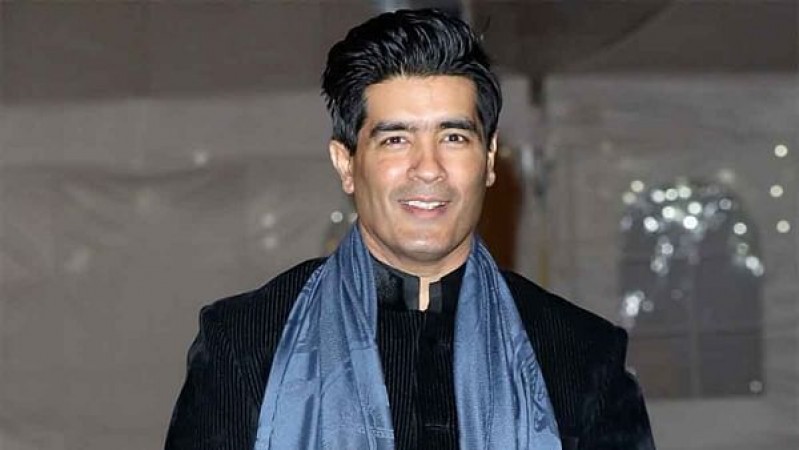
Few names are as well-known in the glitzy world of Indian fashion as Manish Malhotra's. In the fashion industry, Manish Malhotra has established a reputation for elegance, style, and innovation over the course of his multidecade career. However, Ram Gopal Varma's "Rangeela" (1995) marked the beginning of his path to fame as a fashion designer. In this article, we delve into the intriguing tale of how Manish Malhotra gained worldwide recognition for his ground-breaking costumes for the movie "Rangeela."
Manish Malhotra began his career in the Indian film industry as a costume designer before the rest of the world recognized him as a trendsetter in the fashion world. He had a natural passion for fashion and design despite being born in London and raised in Mumbai. He started his professional career in the early 1990s, and fate brought him to the Bollywood industry.
His first projects in the world of film costumes were modest, but his talent quickly caught the attention of professionals in the field. What made him unique was his innate sense of aesthetics and his capacity to turn common fabric into extraordinary clothing.
When Manish Malhotra was asked to create costumes for Urmila Matondkar, the lead actress in "Rangeela," in 1995, it was a chance that would forever change his career. Urmila was a rising star in Bollywood at the time, and the movie was anticipated to mark a significant turning point in her career.
"Rangeela," which is set in the vibrant world of Bollywood, called for costumes that not only matched the theme of the movie but also made a statement about fashion. Urmila Matondkar's Mili was a determined and ambitious actress, and her outfits needed to match her vivacious character.
Taking on the challenge head-on was Manish Malhotra. He created Urmila Matondkar's costumes for "Rangeela" in a revolutionary manner. He redefined Bollywood fashion by fusing his designs with an original fusion of modern style and classic elegance.
The iconic orange skirt and crop top look that Urmila wore in the song "Tanha Tanha" was one of the film's most memorable outfits. The outfit not only set new fashion trends, but it also solidified Manish Malhotra's reputation as an imaginative creator with a keen eye for detail. Tradition and modernity were seamlessly merged by the vivid colors and exquisite embroidery.
In "Rangeela," Manish Malhotra did more than just create outfits; he also used them to create characters. Each outfit Urmila Matondkar wore had a narrative that allowed the audience to empathize with the characters more deeply.
In 1995, "Rangeela" was published, and it became an immediate critical and financial success. Along with the entertaining plot and catchy songs, Urmila Matondkar's wardrobe was a source of discussion and admiration. The film not only entertained viewers; the fashion displayed on screen also served as inspiration for them.
In order to redefine fashion in Indian cinema, Manish Malhotra's contribution to "Rangeela" was essential. His skill in fusing traditional and modern elements together successfully helped to establish a new fashion vocabulary that appealed to audiences. As a result of the movie's success, he was thrust into the public eye and quickly established himself as the leading fashion icon for Bollywood's leading ladies.
Following the release of "Rangeela," Manish Malhotra's career took off like a rocket. He started creating clothes for some of the biggest names in Bollywood, such as Karisma Kapoor, Rani Mukerji, and Aishwarya Rai Bachchan. His costumes for movies like "Kuch Kuch Hota Hai," "Dil To Pagal Hai," and "Kabhi Khushi Kabhie Gham" became recognizable and still have an impact on fashion today.
Manish Malhotra's distinctive fashion sense, which was distinguished by lavish embroidery, luxurious fabrics, and a flawless fusion of modern and traditional elements, became his brand name. In India's fashion industry, he became well-known for his designs that not only adorned the red carpets of prestigious events but also the silver screen.
The influence of Manish Malhotra went beyond the world of film. He entered the haute couture industry and presented his collections at some of the most prestigious fashion shows both domestically and internationally. International publications have featured his work, and he has dressed stars from Bollywood and Hollywood.
The promotion of Indian textiles and craftsmanship on a global scale has also been greatly aided by him. He has contributed to the revival of traditional embroidery techniques and the promotion of India's rich cultural heritage through his designs.
His talent, commitment, and vision are evident in Manish Malhotra's rise from a young, aspiring designer to one of India's most renowned fashion icons. The iconic work he did for the movie "Rangeela" is what first brought him to public attention, despite the fact that his illustrious career spans many areas of the fashion industry.
The movie "Rangeela" not only signaled a turning point in Manish Malhotra's career but also permanently changed Bollywood fashion. More than just costumes, his designs for the movie represented his creativity and ability to tell a story.
It is impossible to ignore the part "Rangeela" played in determining Manish Malhotra's fate as we commemorate his illustrious career. It serves as a reminder that, on occasion, all it takes is one chance or one film to catapult a talent into the top echelons of success. Manish Malhotra's journey from "Rangeela" to the international fashion scene is proof of the magic that happens when talent and opportunity collide in the worlds of film and fashion.
Celebrities' Top 15 Skin-Care Tips for Radiant Skin